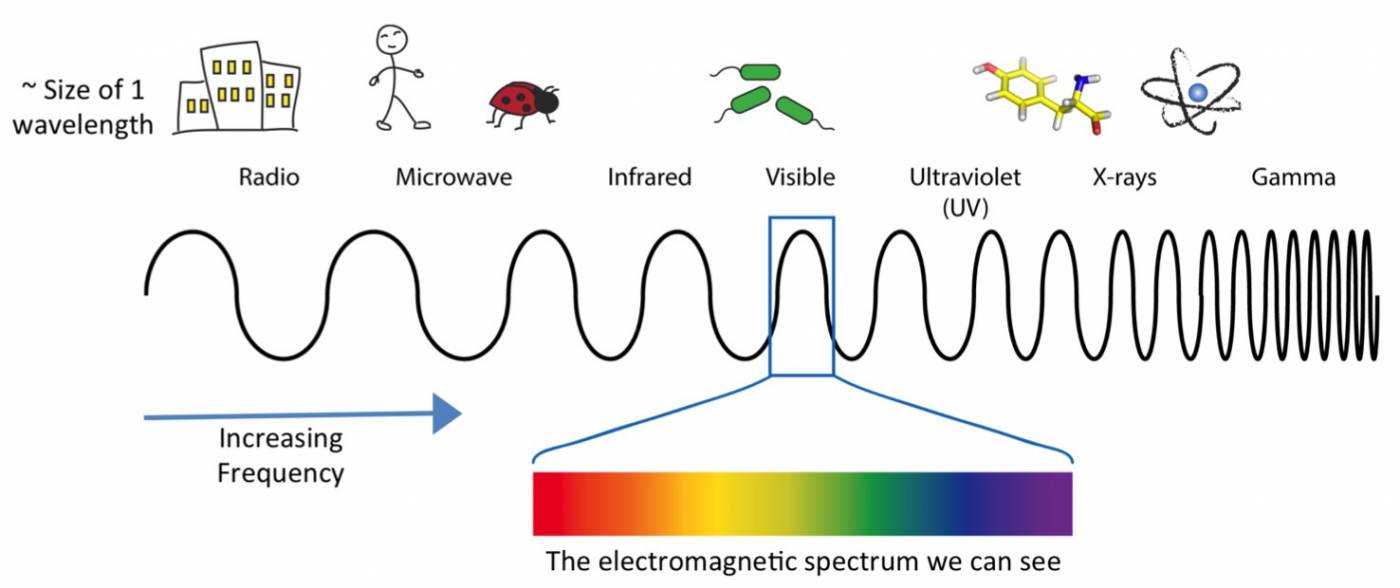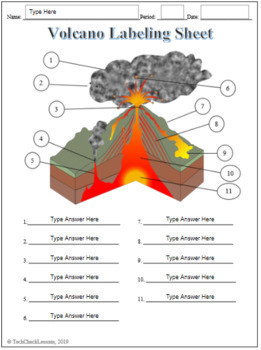45 label the different parts of the sun
Anatomy of the Sun | NASA The Radiative Zone - Energy moves slowly outward, taking more than 170,000 years to radiate through this layer of the Sun. The Convection Zone - Energy continues to move toward the surface through convection currents of the heated and cooled gas. The Sun | Earth Science | Course Hero The mass of the Sun is 99.8% of the mass of our solar system. The Sun is mostly made of hydrogen with smaller amounts of helium in the form of plasma. The main part of the Sun has three layers: the core, radiative zone, and convection zone. The Sun's atmosphere also has three layers: the photosphere, the chromosphere, and the corona.
PDF Parts of the Sun - Montana From the center out, the layers of the sun are as follows: the solar interior which is composed of the core, the radiative zone and the convective zone. The visible surface is made up of the photosphere and the chromosphere. The outermost layer is called the corona. In this lesson, students will learn about the sun, our closest star. Guidelines 1.
Label the different parts of the sun
What Are The Layers Of The Sun? - WorldAtlas The layers of the Sun are divided into two larger groups, the outer and the inner layers. The outer layers are the Corona, the Transition Region, the Chromosphere, and the Photosphere, while the inner layers are the Core, the Radiative Zone, and the Convection Zone. The Outer Layers Corona Transition region Chromosphere Photosphere PDF The Structure of the Sun - Space Weather Prediction Center In studying the structure of the Sun, solar physicists divide it into four domains: the interior, the surface atmospheres, the inner corona , and the outer corona. Section 1.—The Interior The Sun's interior domain includes the core, the radiative layer , and the convective layer (Figure 2-1). Layers of the Sun - Science Facts Corona: The Outer Layer The outermost layer is the corona and can be seen during a solar eclipse when the sun is blocked by the moon. This layer is hotter than the surface of the sun. Less Than Five - Layers of the Sun Explained - Outer Layers Watch on The sun has many chemical elements but since it is so hot they are in a gaseous state.
Label the different parts of the sun. PDF The Sun Worksheet - Northland Preparatory Academy a. the layer of the sun's atmosphere that gives off visible light b. the layer of the sun's atmosphere that has a reddish glow c. the layer of the sun's atmosphere that looks like a halo during an eclipse d. areas of gas on the sun's surface that are cooler than the gases around them e. reddish loops of gas that link parts of sunspot ... The sun's atmosphere: Photosphere, chromosphere and corona The sun's atmosphere is made up of several layers, mainly the photosphere, the chromosphere and the corona. It's in these outer layers that the sun 's energy, which has bubbled up from the sun's... Layers of the Sun - The Sun Today with Dr. C. Alex Young The Sun, as shown by the illustration to the left, can be divided into six layers. From the center out, the layers of the Sun are as follows: the solar interior composed of the core (which occupies the innermost quarter or so of the Sun's radius),; the radiative zone, ; and the convective zone,; then there is the visible surface known as the photosphere, Diagram of the Solar System - Universe Today Jupiter - Jupiter is the 5th planet from the Sun, and the largest planet in the Solar System. Jupiter has as much mass as 2.5 times all the rest of the planets combined - almost all of this ...
What are the Parts of the Sun? - Universe Today If you could take the Sun apart, and stack up its various elements, you would find that the Sun is made of hydrogen (74%) and helium (about 24%). Astronomers consider anything heavier than helium... Parts of a Plant | Functions of Plant Parts | DK Find Out The three main parts are: the roots, the leaves, and the stem. Each part has a set of jobs to do to keep the plant healthy. The roots absorb water and minerals from the soil and anchor the plant in the ground. The stem supports the plant above ground, and carries the water and minerals to the leaves. The leaves collect energy from the Sun and ... Regions and Features of the Sun | Center for Science Education The interior of the Sun is divided into three main regions. At the center is the core, where energy is produced by nuclear fusion at incredible temperatures. The core is surrounded by the radiative zone, which in turn is enclosed within the convective zone. The visible "surface" of the Sun, called the photosphere, sits atop the interior layers. Earth's rotation around the Sun and the sequence of the four seasons The Earth revolves around the Sun once every 365 and quarter days (one year), The rotation of the Earth around the Sun causes the sequence of the four seasons (the summer - the spring - the autumn - the winter). The sequence of the four seasons. The Earth's axis is inclined and this causes the difference in the length of the day and the ...
Overview | Sun - NASA Solar System Exploration This is because the Sun's surface isn't solid like Earth's. Instead, the Sun is made of super-hot, electrically charged gas called plasma. This plasma rotates at different speeds on different parts of the Sun. At its equator, the Sun completes one rotation in 25 Earth days. At its poles, the Sun rotates once on its axis every 36 Earth days. What Causes the Seasons? | NASA Space Place - NASA Science for Kids It also blasted a big hole in the surface. That big hit sent a huge amount of dust and rubble into orbit. Most scientists think that that rubble, in time, became our Moon. As Earth orbits the Sun, its tilted axis always points in the same direction. So, throughout the year, different parts of Earth get the Sun's direct rays. Layers of the Sun (With Labels) - Solar System From the inside out, the solar interior consists of the core, the radiative zone, and the convection zone. The solar atmosphere is made up of the photosphere, the chromosphere, a transition region, and the corona. Beyond the corona is the solar wind, which is actually an outward flow of coronal gas. Layers of the Sun - Facts About the Structure and Parts of the Sun Being a ball of hot burning gases, the Sun is composed of several parts: the corona, chromosphere, photosphere, core, Sunspots and prominences. Corona is the outermost layer of the Sun's atmosphere. It is visible only during the total eclipse of the Sun, and it extends in all directions from the chromosphere.
Surface Features of the Sun ( Read ) | Earth Science - CK-12 Foundation The most noticeable surface features of the Sun are cooler, darker areas known as sunspots ( Figure below ). Sunspots are located where loops of the Sun's magnetic field break through the surface and disrupt the smooth transfer of heat from lower layers of the Sun, making them cooler, darker, and marked by intense magnetic activity.
The Sun - Imagine the Universe! The three parts of the atmosphere, from the surface of the Sun outward are the photosphere, chromosphere, and corona. (Credit: NASA) The Photosphere Since the Sun is made up of hot gas, there isn't really a "surface" to it. Instead, as you move from space toward the Sun's core, the gas gets denser and denser.
Layers of the Sun | Parts of the Sun | DK Find Out The structure of the sun is made up of four layers. At the very center is the dense, hot core. Around the core lie two layers: a thick layer called the radiative zone and a thinner, cooler layer called the convective zone. Surrounding all of them is the sun's surface layer, known as the photosphere.
Anatomy of the Sun Diagram | Quizlet Total Solar Eclipse Rise And Fall Atmosphere Terms in this set (9) Core With a temperature of about 15 million degrees Celsius, it is the central region of the Sun. Under the force of gravity, hydrogen fuses to form helium and releases large amounts of energy in the process Radiative Zone It is the layer above the core.
PDF The Structure of the Sun - European Space Agency Every layer of the Sun is very different, and requires a distinct instrument, and as they study it in all the electromagnetic spectrum, scientists obtain as much information as possible from the Sun. Just as we previously said we can get information from: - Inner Sun - Photosphere - Chromosphere - Corona
Earth-Sun Relationships | National Geographic Society Any circle drawn around the Earth divides it into two equal halves called hemispheres. There are generally considered to be four hemispheres: Northern, Southern, Eastern, and Western. Grades 6 - 12+ Encyclopedic Entry 321 Earth Physical Geography, Geology, Geography, Earth Science, Astronomy
Garden Guides | Parts of a Sunflower Leaves and Buds. Large, green leaves grow out of the sunflower stock and are responsible for the majority of the energy-producing photosynthesis for the plant. The leaf blade is the flattened area and contains small hairs. The petiole is the thin stemlike piece that attaches the leaf to the stalk. On the common annual sunflower, a bud develops ...
Parts of the Sun Flashcards | Quizlet Photosphere Lowest layer of the Sun's atmosphere; gives off light and has temperatures of about 6,000K. Chromosphere Layer of the Sun's atmosphere above the photosphere. Prominence Links different parts of the sun spot regions together. Corona Layer of the Sun that is only visible during a solar eclipse.
Layers of the Sun | NASA The inner layers are the Core, Radiative Zone and Convection Zone. The outer layers are the Photosphere, the Chromosphere, the Transition Region and the Corona. IRIS will focus its investigation on the Chromosphere and Transition Region. More detail on the outer layers follows:






Post a Comment for "45 label the different parts of the sun"